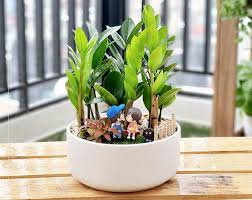Creating a Positive Learning Environment for Children Through Feng Shui

As parents and educators, one of the most important aspects of a child’s development is the environment in which they learn. A positive learning space can enhance a child’s focus, creativity, and overall academic performance. While many factors influence a child’s ability to learn, one often-overlooked element is the physical environment itself. The ancient art of Feng Shui, which focuses on balancing energy (Chi) to improve various aspects of life, can play a key role in creating a positive, harmonious learning environment for children.
Feng Shui principles are based on the belief that everything in the environment has an impact on our energy and well-being. By applying these principles in the design and arrangement of a child’s learning space, we can ensure that the energy flow supports their development, fosters concentration, and encourages creativity. This article will explore how to create a positive, supportive learning environment for children by applying Feng Shui principles to the design and organization of their study area.
1. The Importance of Feng Shui in a Child’s Learning Environment
Feng Shui is more than just interior design; it is a philosophy that aims to harmonize the flow of energy in any given space. When it comes to children’s study areas, the goal is to create an environment that promotes focus, creativity, and calmness while minimizing distractions and stressors. Feng Shui principles can be applied to:
- Enhance a child’s concentration and learning abilities.
- Foster positive emotions and reduce anxiety.
- Create a balanced and harmonious atmosphere for academic success.
By applying Feng Shui principles to a child’s study space, we can optimize their surroundings to better support their learning and emotional well-being.
2. Choosing the Right Location for the Study Area
The location of a child’s study space is one of the most crucial factors when applying Feng Shui. The area chosen for studying should be conducive to concentration, free from distractions, and should have a positive energy flow.
Avoid High-Traffic Areas
A child’s study area should not be located in high-traffic zones where there are frequent disruptions or noise. These areas can create distractions that hinder a child’s focus. Ideally, the study space should be situated in a quieter area of the house, away from the entrance, kitchen, and living room, where movement and noise are common.
Avoid Study Areas Near the Door
Feng Shui suggests avoiding placing a child’s desk directly in line with the door. This is because a direct line of sight to the door can disrupt the flow of energy and make the child feel anxious or overwhelmed. It’s best to position the desk so that the child can see the door but isn’t sitting directly in front of it. This positioning creates a feeling of security and control.
Choose a Quiet Corner or Room
If possible, choose a quiet corner or a separate room for studying. A peaceful, isolated space promotes better concentration and minimizes distractions from other areas of the house. A room with natural light and adequate ventilation is also ideal for creating a calm and focused atmosphere.
3. Desk Placement and the Command Position
In Feng Shui, one of the most important concepts is the “command position,” which refers to the placement of a desk in a way that allows the person to see the door while still being situated in a position of power and control. When setting up a child’s study space, placing their desk in the command position can significantly enhance their focus, confidence, and sense of security.
Desk Positioning: What is the Command Position?
The command position involves placing the desk diagonally across from the door, so the child can see anyone entering the room without being directly in front of the door. This gives them a sense of awareness and control over the space, allowing them to stay focused on their work without feeling startled or anxious when someone enters.
The desk should ideally be placed against a solid wall to provide a sense of support and stability. The wall acts as a foundation, offering the child a feeling of protection and helping them concentrate better. If a solid wall isn’t available, using a bookcase or other furniture behind the desk can provide the same feeling of security.
Avoid Sitting with a Wall Behind the Desk
It’s important to avoid placing the desk in a way where the child has a wall directly behind them without any support. In Feng Shui, sitting with a wall behind you can create a sense of vulnerability and insecurity, which may make it difficult for the child to concentrate. A strong, supportive background is essential for promoting confidence and stability.
4. Choosing the Right Colors for the Study Space
Colors play a significant role in Feng Shui as they influence the energy and mood of a space. When it comes to a child’s study area, the colors should be chosen carefully to foster concentration, creativity, and a calm, focused mind.
Calming and Focused Colors
For a positive learning environment, it is important to choose calming and soothing colors. Some of the best colors for children’s study spaces include:
- Soft Green: Green represents growth, balance, and renewal. It is a soothing color that promotes concentration and creativity. It also brings a sense of harmony and balance to the study area.
- Pale Blue: Blue is associated with clarity and focus. It is a calming color that can help reduce stress and promote clear thinking. Lighter shades of blue are ideal for a study environment.
- Earthy Tones: Earthy colors like beige, light brown, and terracotta are grounding and promote stability. These tones can help the child feel more centered and focused while studying.
Avoid Overstimulating Colors
While bright colors like red and orange are energizing, they can also be overstimulating in a study space. These colors may make the child feel anxious or restless, making it harder for them to concentrate. It’s best to avoid using bold, intense colors on the walls or furniture. If you want to incorporate these colors, use them sparingly as accent pieces, such as in throw pillows or artwork.
5. Lighting: A Key Element in Feng Shui
Good lighting is essential for creating a positive and productive study environment. In Feng Shui, lighting is associated with energy flow, and the right lighting can significantly affect a child’s mood, concentration, and productivity.
Natural Light
Natural light is the most desirable form of lighting, as it promotes a sense of clarity and vitality. If possible, place the child’s desk near a window to allow natural light to flood the space. Exposure to natural light has been shown to improve mood and increase concentration, making it an essential element in a study area.
Ambient Lighting
In addition to natural light, ambient lighting is essential for creating a comfortable and balanced atmosphere. Avoid harsh, fluorescent lights that can strain the eyes and create an uncomfortable, sterile environment. Instead, opt for soft, warm light sources like table lamps or pendant lights. Adjustable lighting is also beneficial, as it allows the child to customize the brightness depending on the time of day or task at hand.
6. Decluttering and Organization: The Role of Cleanliness in Feng Shui
A cluttered and disorganized space can create chaos and block the flow of positive energy. Feng Shui emphasizes the importance of keeping spaces tidy and well-organized to allow Chi to flow freely. In a study area, clutter can cause mental confusion, stress, and difficulty concentrating.
Declutter the Study Area
Make sure that the child’s study space is free of unnecessary items. Only keep the essentials on the desk and shelves, such as books, stationery, and learning materials. Avoid overcrowding the space with toys, unnecessary gadgets, or personal items that can become distractions.
Use Storage Solutions
Invest in storage solutions like bookshelves, filing cabinets, or storage boxes to keep books and materials organized. Keeping the study area neat and orderly promotes clarity and focus, making it easier for the child to engage in their work.
7. Incorporating Natural Elements: A Touch of Nature
One of the key principles of Feng Shui is the inclusion of natural elements in the environment. Plants, natural materials, and elements like water can help to bring balance and harmony to a space, promoting a calm and focused atmosphere.
Indoor Plants
Adding plants to the study area is a simple yet effective way to improve the energy of the space. Plants are known to purify the air, reduce stress, and create a calming environment. Some ideal plants for a child’s study area include peace lilies, bamboo, and spider plants.
Natural Materials
Incorporating natural materials like wood, stone, or clay into the study area can help create a grounding atmosphere. Wooden furniture, shelves, or decorative items can enhance the Earth element and provide stability, while also adding warmth and a natural aesthetic.
8. Personalizing the Study Space
While Feng Shui encourages minimalism, it also emphasizes the importance of personalization. A child’s study space should reflect their interests and inspire them to learn. Personalizing the space with a few meaningful items can help foster a sense of ownership and motivation.
Meaningful Artwork
Hanging artwork that inspires the child or aligns with their interests can enhance the energy of the room. Whether it’s a picture of a place they love, motivational quotes, or educational posters, artwork can encourage creativity and positivity.
Personal Items
Incorporating a few personal items, such as a favorite toy or a photo of loved ones, can help the child feel comfortable and emotionally supported in their study space. However, be mindful not to overdo it, as too many personal items can create distractions.
9. Conclusion
Creating a positive and supportive learning environment for children is essential for their academic and emotional development. By applying Feng Shui principles such as proper desk placement, color choices, natural lighting, and decluttering, you can create a study space that promotes focus, calmness, and creativity.
By ensuring that a child’s study area is balanced, organized, and in harmony with the natural world, you can help them thrive academically and emotionally. With a Feng Shui-inspired study space, children will have the tools
they need to learn, grow, and succeed.

